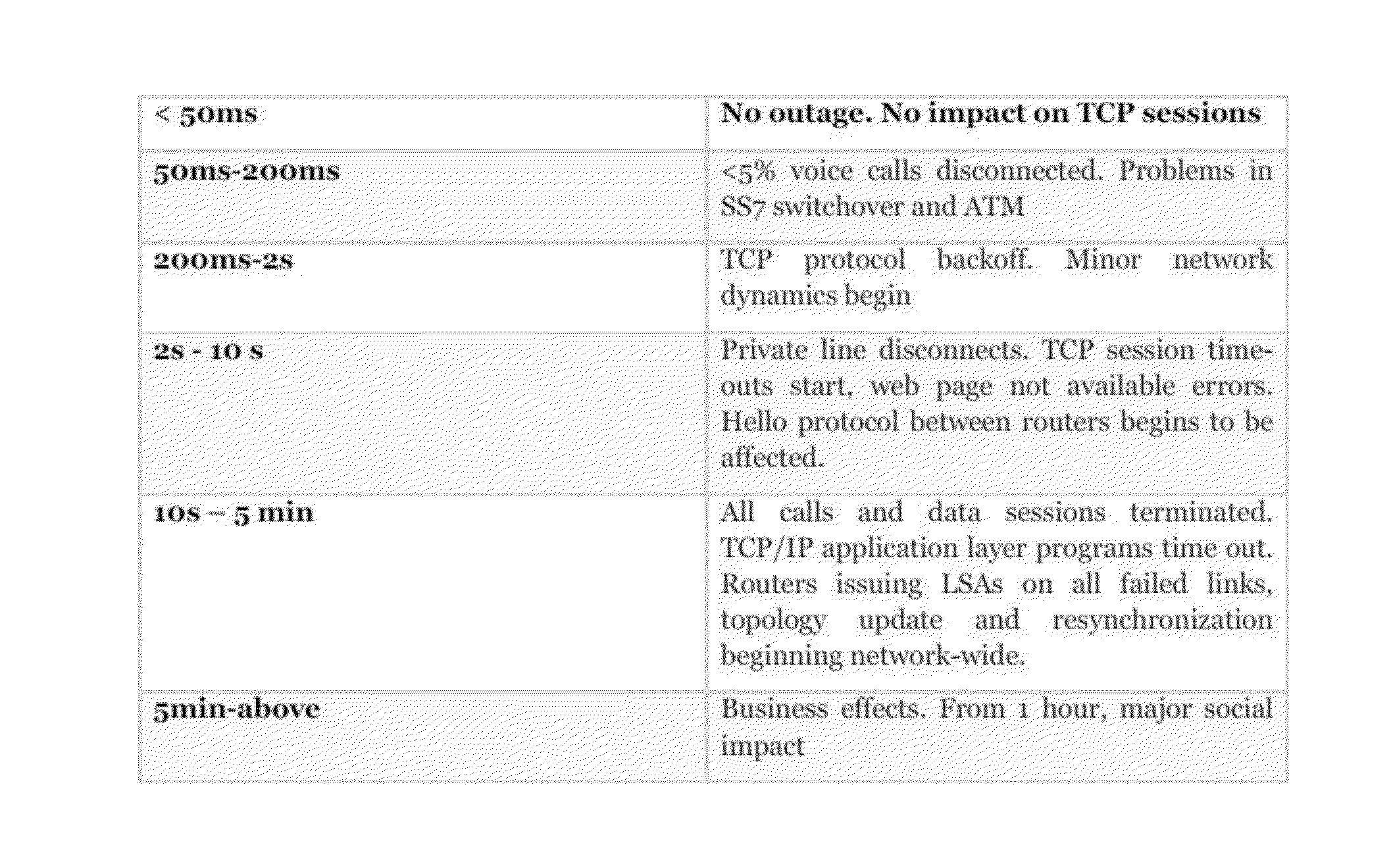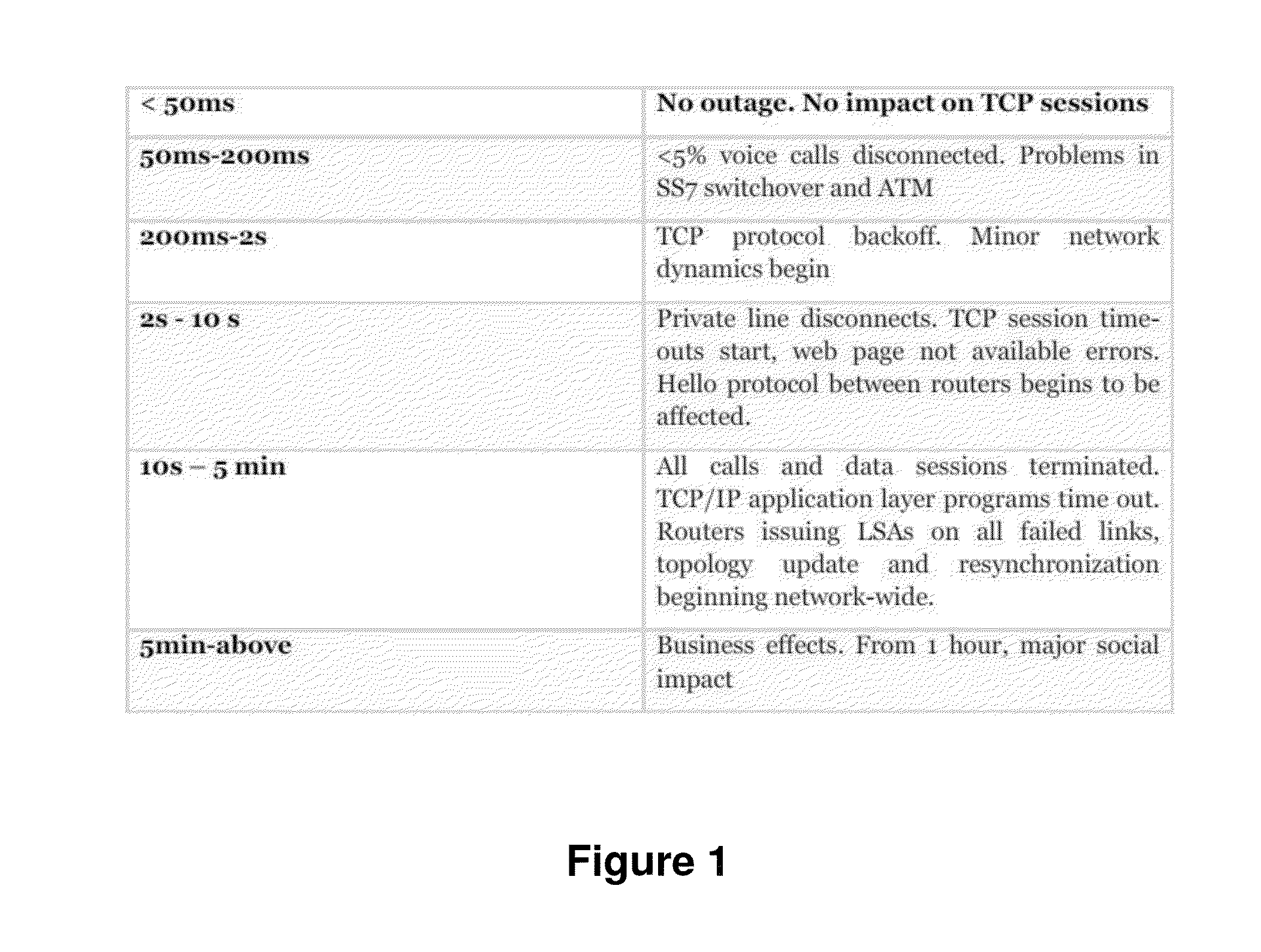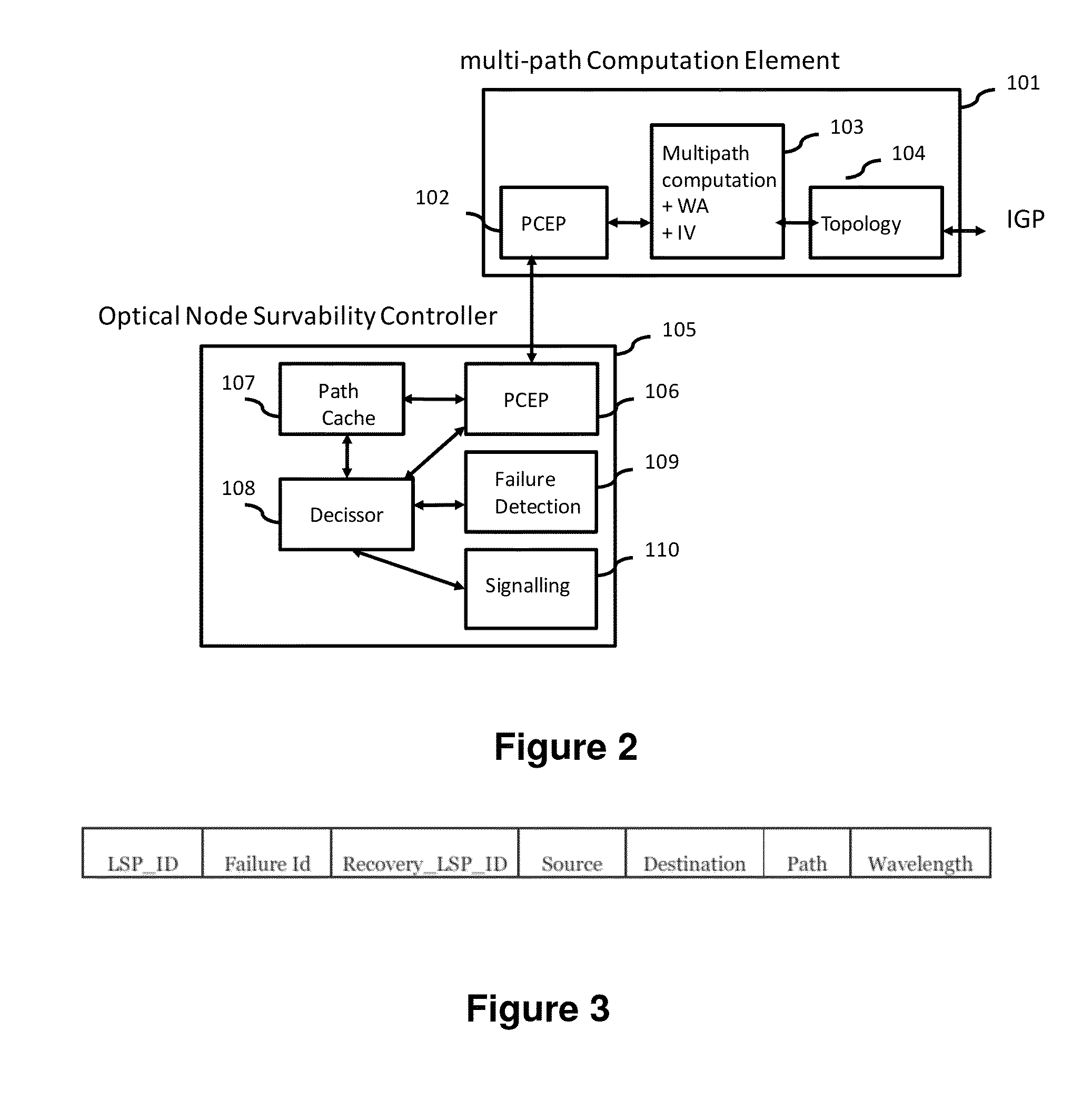Procedure and system for optical network survival against multiple failures
a technology of optical network and multiple failures, applied in multiplex communication, optics, instruments, etc., can solve problems such as cuts in fibres, equipment failure in the link, and not uncommon failures in fibre links or nodes
- Summary
- Abstract
- Description
- Claims
- Application Information
AI Technical Summary
Benefits of technology
Problems solved by technology
Method used
Image
Examples
Embodiment Construction
[0067]It is necessary to offer an alternative to the state of the art which covers the gaps found therein, particularly those related to the lack of proposals providing a fast recovery for multiple failures.
[0068]To that end, the present invention provides, in a first aspect, a procedure for optical network survival against multiple failures, comprising using a pre-planned path restoration scheme for computing in advance, or pre-calculating, recovery paths for recovering failed working paths.
[0069]On contrary to the prior art proposals, the procedure of the first aspect of the invention, in a characteristic manner, in case of single or multiple failures have been produced in each of said working paths it comprises pre-calculating a set of recovery paths for each working path linking an origin node with a destination node, and simultaneously using the recovery paths of said set of recovery paths to try to communicate, said origin node with said destination node, by means of simultane...
PUM
 Login to View More
Login to View More Abstract
Description
Claims
Application Information
 Login to View More
Login to View More - R&D
- Intellectual Property
- Life Sciences
- Materials
- Tech Scout
- Unparalleled Data Quality
- Higher Quality Content
- 60% Fewer Hallucinations
Browse by: Latest US Patents, China's latest patents, Technical Efficacy Thesaurus, Application Domain, Technology Topic, Popular Technical Reports.
© 2025 PatSnap. All rights reserved.Legal|Privacy policy|Modern Slavery Act Transparency Statement|Sitemap|About US| Contact US: help@patsnap.com



